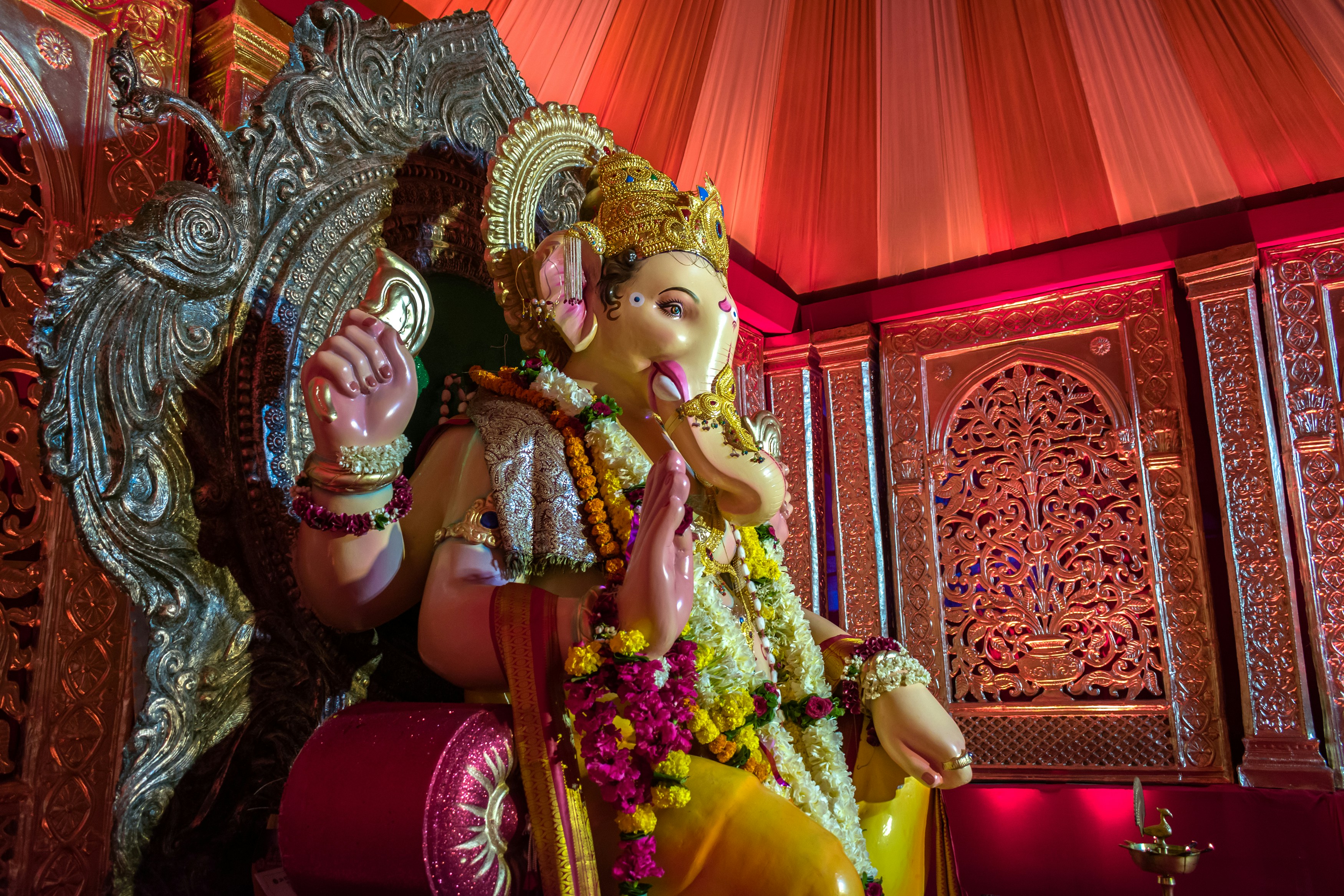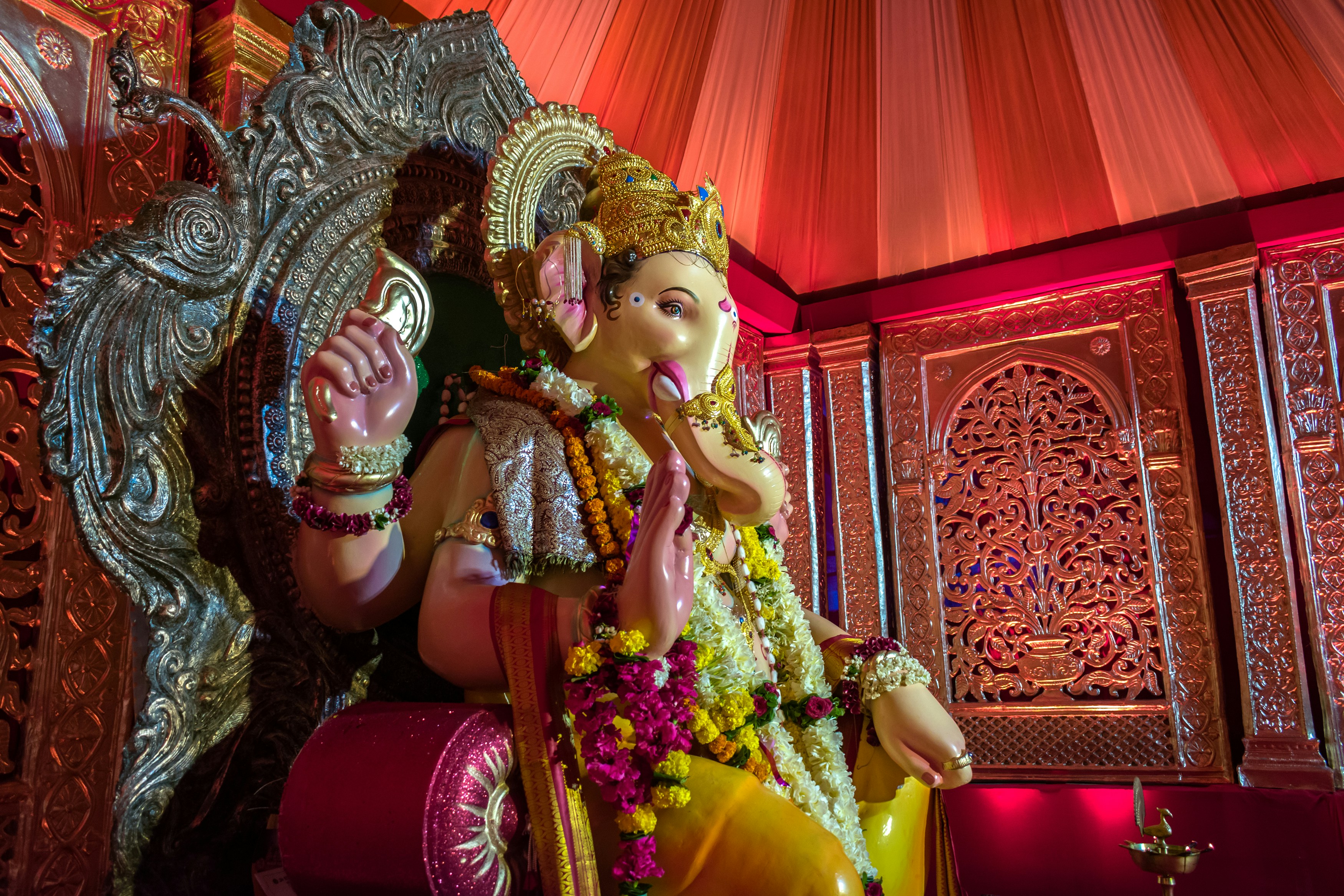The Tulja Bhavani Temple holds a special place in the hearts of the people of Maharashtra. It is not just a place of worship, but also a symbol of the state’s rich history and cultural heritage. The temple is believed to have been built during the reign of the Chalukya dynasty, making it over a thousand years old. Its architecture reflects the intricate craftsmanship of that era, with beautifully carved pillars and ornate sculptures adorning its walls.
Legend has it that the idol of Goddess Tulja Bhavani was discovered by a shepherd in the nearby hills. The shepherd, overwhelmed by the divine presence, built a small shrine to honor the goddess. Over time, the shrine grew in size and popularity, attracting devotees from far and wide. Today, the Tulja Bhavani Temple is not only a place of worship but also a major pilgrimage site, drawing thousands of devotees every year.
One of the unique features of the Tulja Bhavani Temple is its association with the Bhavani Tuljapur Trust, which manages the affairs of the temple. The trust is known for its philanthropic activities, providing free education, healthcare, and other social welfare services to the local community. This has further strengthened the bond between the temple and the people, making it not just a religious institution but also a center for social upliftment.
Visiting the Tulja Bhavani Temple is a truly mesmerizing experience. As you enter the temple premises, you are greeted by the soothing sound of bells and the fragrance of incense. The main shrine, dedicated to Goddess Tulja Bhavani, is a sight to behold. The idol, adorned with gold and precious gems, radiates a divine energy that fills the air.
Devotees offer prayers and seek the blessings of the goddess for various reasons – be it good health, success in endeavors, or fulfillment of desires. Many also come to express their gratitude for the blessings they have received. The temple is known for its special rituals and festivals, which are celebrated with great pomp and show. The Navratri festival, in particular, is a grand affair, attracting devotees from all over Maharashtra.
Outside the main shrine, the temple complex is a sprawling area with beautifully manicured gardens and serene water bodies. It provides a peaceful environment for devotees to meditate and connect with their inner selves. The temple also houses several smaller shrines dedicated to other deities, adding to the spiritual ambiance.
As you leave the Tulja Bhavani Temple, you carry with you a sense of peace and tranquility. The divine energy of the goddess lingers in your heart, reminding you of the strength and grace that she represents. Maharashtra’s Tulja Bhavani Temple is not just a place of worship, but a testament to the enduring faith and devotion of its people.
As the family deity of the Bhosale dynasty, Goddess Tulja Bhavani played a significant role in the history of the Maratha Empire. The empire, founded by Shivaji Bhosale, grew to become one of the most formidable powers in India during the 17th and 18th centuries. The Bhosale rulers, deeply devoted to the goddess, attributed their success in warfare to her divine intervention.
It is said that before every battle, the Bhosale warriors would seek the blessings of Goddess Tulja Bhavani at her temple. They believed that her presence and divine energy would imbue them with courage and strength, ensuring victory on the battlefield. The temple became a symbol of the Bhosale dynasty’s power and their unwavering faith in the goddess.
Throughout the centuries, the Tulja Bhavani Temple has witnessed numerous historical events and played a pivotal role in shaping the destiny of the Maratha Empire. The temple’s architecture reflects the grandeur and splendor of the empire, with intricate carvings and sculptures adorning its walls. Devotees flock to the temple to pay homage to the goddess and seek her blessings for prosperity and protection.
Over time, the Tulja Bhavani Temple has become not only a religious site but also a cultural and historical landmark. It stands as a testament to the rich heritage and traditions of the Maratha people. The temple’s annual festivals and rituals attract thousands of devotees, who come to witness the vibrant celebrations and experience the spiritual aura of the place.
Today, the Tulja Bhavani Temple continues to be a revered pilgrimage site, attracting devotees from all walks of life. Its significance in ancient history and mythology, as well as its association with the Maratha Empire, has made it an integral part of India’s cultural fabric. The temple stands as a reminder of the power of faith and the enduring legacy of the Bhosale dynasty.
Architectural Marvel
The Tulja Bhavani Temple is not only a spiritual haven but also an architectural marvel. The temple complex is built in the Hemadpanthi style of architecture, which was popular during the Yadava dynasty. This style of architecture is characterized by its simplicity, elegance, and attention to detail. The temple’s design incorporates various elements such as intricate carvings, ornate pillars, and beautifully sculpted domes, all of which contribute to its grandeur.
The walls of the temple are adorned with exquisite carvings that depict scenes from Hindu mythology. These carvings not only showcase the artistic prowess of the craftsmen but also serve as a visual narrative, telling stories of gods, goddesses, and epic battles. Each carving is meticulously crafted, with every intricate detail capturing the essence of the mythological tale it represents.
The pillars of the temple are another remarkable feature of its architecture. They are intricately carved with motifs and patterns that are unique to the Hemadpanthi style. These pillars not only provide structural support but also add to the overall aesthetic appeal of the temple. The play of light and shadow on these intricately carved pillars creates a mesmerizing effect, further enhancing the spiritual experience for the devotees.
The main sanctum of the temple houses the idol of Goddess Tulja Bhavani, adorned with gold ornaments and precious stones. The idol is believed to be swayambhu (self-manifested), which adds to its divine significance. Devotees offer prayers and seek the blessings of the goddess for prosperity, peace, and protection. The sanctum is designed in such a way that it creates a sense of reverence and devotion. The architecture and design of the sanctum, with its intricate carvings and sacred symbols, create a serene and holy atmosphere, making it the focal point of the temple.
Overall, the Tulja Bhavani Temple is a testament to the rich architectural heritage of India. Its Hemadpanthi style of architecture, intricate carvings, and divine ambiance make it a must-visit for devotees and art enthusiasts alike. The temple stands as a symbol of devotion, spirituality, and artistic excellence, captivating all who step foot within its sacred walls.
Aside from its historical and architectural importance, the Tulja Bhavani Temple is revered for its deep spiritual significance. Devotees believe that worshipping Goddess Tulja Bhavani can bring about profound inner transformation and provide strength, courage, and victory in battles, both literal and metaphorical.
Visitors from all walks of life flock to the temple to seek the blessings of the goddess and find solace in her divine presence. The atmosphere within the temple is charged with devotion and reverence, as devotees offer their prayers and perform rituals to connect with the divine energy of Tulja Bhavani.
Throughout the year, the temple plays host to various religious festivals that further enhance its spiritual allure. One of the most significant celebrations is Navratri, a nine-day festival dedicated to the goddess. During this time, the temple is adorned with vibrant decorations, creating an ambiance of joy and festivity.
Devotees gather in large numbers to participate in the special prayers and rituals conducted during Navratri. This auspicious occasion is marked by devotional singing and dancing, as devotees express their devotion and gratitude to Goddess Tulja Bhavani. The air is filled with the sounds of hymns and chants, creating an atmosphere of spiritual fervor and devotion.
Navratri is not only a time for celebration but also a period of intense spiritual practice. Devotees engage in fasting, meditation, and recitation of sacred texts to purify their minds and deepen their connection with the divine. It is believed that during this time, the goddess is especially receptive to the prayers and aspirations of her devotees.
As the festival culminates on the ninth day, known as Navami, devotees bid farewell to the goddess with great reverence and gratitude. The final day is marked by a grand procession, where the idol of Tulja Bhavani is carried through the streets, accompanied by music, dance, and enthusiastic devotees.
The Tulja Bhavani Temple, with its rich spiritual heritage and vibrant festivities, continues to attract pilgrims and devotees seeking spiritual upliftment and divine blessings. It stands as a testament to the enduring power and significance of the goddess in the lives of her devotees.
Visiting the Temple
If you are planning a visit to the Tulja Bhavani Temple, here are a few things to keep in mind:
1. Dress Code:
As with any religious place, it is advisable to dress modestly and respectfully when visiting the temple. Wearing traditional Indian attire or clothes that cover the shoulders and knees is appropriate. This not only shows respect for the religious customs but also allows you to blend in with the local culture and experience the true essence of the temple.
2. Timing:
The temple is open from early morning till late evening. It is best to plan your visit during weekdays to avoid the crowds that gather during weekends and festivals. This way, you can have a more peaceful and intimate experience with the goddess and take your time to soak in the spiritual atmosphere of the temple.
3. Rituals and Offerings:
Devotees can participate in various rituals and offer prayers to the goddess. It is customary to offer flowers, coconuts, and sweets as a token of devotion. The temple also has a prasad counter where you can get blessed food as a divine offering. Taking part in these rituals not only allows you to connect with the divine but also gives you a deeper understanding of the religious practices and traditions followed at the temple.
4. Surrounding Attractions:
While you are in the Osmanabad district, you can explore other nearby attractions such as the Naldurg Fort and the Tuljapur Bhavani Temple. These places are of historical and cultural significance and offer a glimpse into the rich heritage of Maharashtra. The Naldurg Fort, located about 40 kilometers from the Tulja Bhavani Temple, is a magnificent structure that dates back to the 12th century. It stands as a testament to the architectural brilliance of the bygone era and offers panoramic views of the surrounding landscape. On the other hand, the Tuljapur Bhavani Temple, located around 90 kilometers from the Tulja Bhavani Temple, is another important pilgrimage site dedicated to the goddess Bhavani. It is believed to be one of the 51 Shakti Peethas and attracts devotees from far and wide.
Exploring these attractions not only adds depth to your visit but also allows you to delve into the history and culture of the region. You can immerse yourself in the stories and legends associated with these places and gain a holistic understanding of the spiritual and historical significance of the Tulja Bhavani Temple and its surroundings.
Enter your email to get the Latest Updated Exploring News and Topics
Discover more from atozexplore.com
Subscribe to get the latest posts sent to your email.







